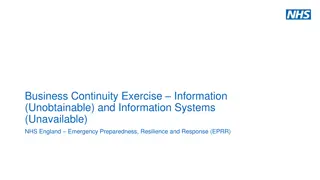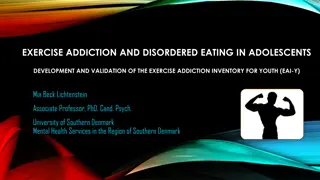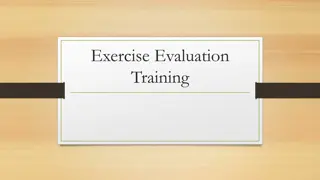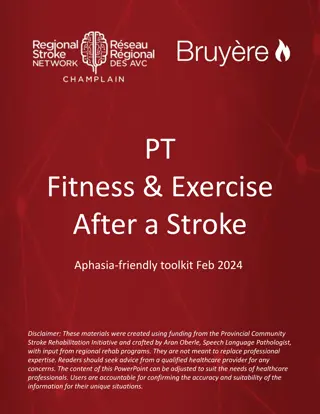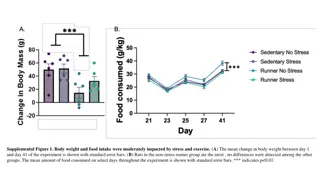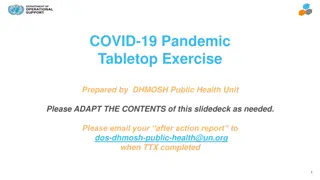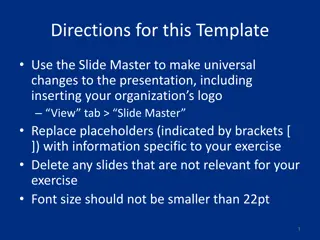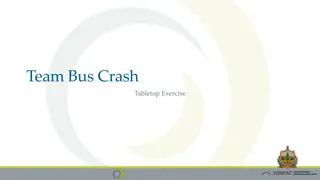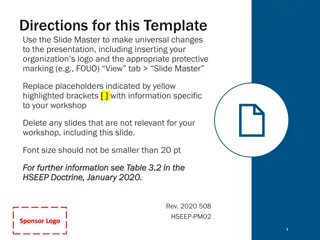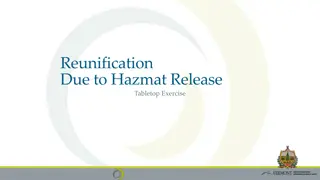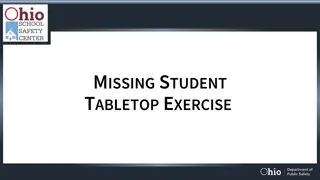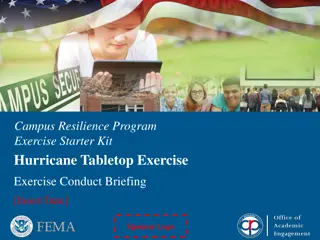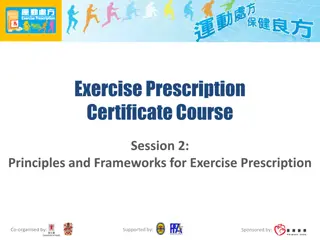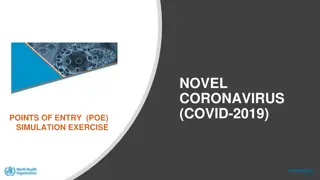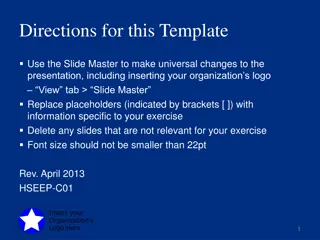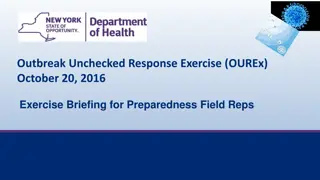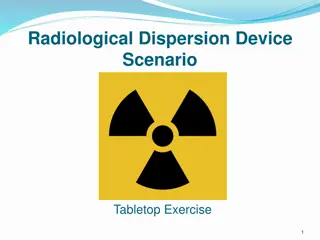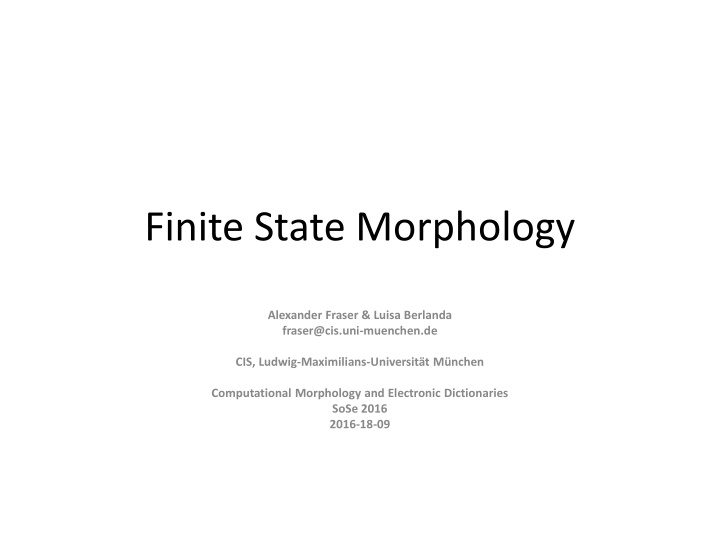
Finite State Morphology SFST Programming Concepts
Explore the basics of SFST programming language for developing finite-state transducers, learn how to work with SFST, write code in terminal, and analyze example sessions and exercises. Enhance your understanding of finite-state morphology through practical examples and exercises.
Download Presentation

Please find below an Image/Link to download the presentation.
The content on the website is provided AS IS for your information and personal use only. It may not be sold, licensed, or shared on other websites without obtaining consent from the author. If you encounter any issues during the download, it is possible that the publisher has removed the file from their server.
You are allowed to download the files provided on this website for personal or commercial use, subject to the condition that they are used lawfully. All files are the property of their respective owners.
The content on the website is provided AS IS for your information and personal use only. It may not be sold, licensed, or shared on other websites without obtaining consent from the author.
E N D
Presentation Transcript
Finite State Morphology Alexander Fraser & Luisa Berlanda fraser@cis.uni-muenchen.de CIS, Ludwig-Maximilians-Universit t M nchen Computational Morphology and Electronic Dictionaries SoSe 2016 2016-18-09
Outline How to work with SFST? SFST Programming Exercises
SFST programming language for developing finite-state transducers compiler which translates programs to transducers tools for applying transducers printing transducers comparing transducers
SFST Example Session > echo "Hello\ World\!" > test.fst storing a small test program > fst-compiler test.fst test.a test.fst: 2 calling the compiler > fst-mor test.a reading transducer... finished. analyze> Hello World! Hello World! analyze> Hello World no result for Hello World analyze> q interactive transducer usage transducer is loaded input recognised another input not recognised terminate program
SFST Basics Write code in terminal: echo " program code " > filename.fst Write code in a file: write program code, save as filename.fst Compile: fst-compiler filename.fst filename.a Execute: fst-mor filename.a
SFST Programming Language Colon operator a:b empty string symbol <> Example: m:m o:i u:<> s:c e:e identity mapping a (an abbreviation for a:a) Example: m o:i u:<> s:c e {abc}:{AB} is expanded to a:A b:B c:<> Example: {mouse}:{mice} Is this expression equivalent to the previous two?
Exercise Try to write these examples as code and try out, what they analyze and generate. m:m o:i u:<> s:c e:e m o:i u:<> s:c e {mouse}:{mice}
Exercise Try to write these examples as code and try out, what they analyze and generate. John | Mary | James mouse | {mouse}:{mice}
Disjunction John | Mary | James accepts these three strings and maps them onto themselves mouse | {mouse}:{mice} analyses mouse and mice as mouse
Multi-Character Symbols strings enclosed in < > are treated as a single unit. {mouse<N><pl>}:{mice} analyses mice as mouse<N><pl>
Multi-Character Symbols A more complex example: schreib {<V><pres>}:{} (\ {<1><sg>}:{e} |\ {<2><sg>}:{st} |\ {<3><sg>}:{t} |\ {<1><pl>}:{en} |\ {<2><pl>}:{t} |\ {<3><pl>}:{en}) The backslashes (\) indicate that the expression continues in the next line What is the analysis of schreibst and schreiben?
Exercise Try to write this example as code and try out, what it analyzes and generates. schreib {<V><pres>}:{} (\ {<1><sg>}:{e} |\ {<2><sg>}:{st} |\ {<3><sg>}:{t} |\ {<1><pl>}:{en} |\ {<2><pl>}:{t} |\ {<3><pl>}:{en})
Multi-Character Symbols What is the analysis of schreibst and schreiben? Schreibst: schreib<V><pres><2><sg> Schreiben: schreib<V><pres><1><pl> schreib<V><pres><3><pl>
Character Ranges [abc]:[AB] is expanded to a:A|b:B|c:B Example: [a-z A-Z]:[b-za B-ZA]* What do you get for the input IBM? What does this transducer recognise? [+-]? [0-9]* (\. [0-9]+)? Note: Characters with a special meaning (! ? . & % | * : ( ) [ ] { } etc.) need to be quoted with a backslash. Blanks are ignored unless they are quoted with a backslash.
Exercise Try to write these examples as code and try out, what they analyze and generate. [a-z A-Z]:[b-za B-ZA]* [+-]? [0-9]* (\. [0-9]+)?
Character Ranges What do you get for the input IBM? HAL What does this transducer recognise? Integers ans Floats, negative or positive
Composition [a-z A-Z]:[b-za B-ZA]* || [a-z A-Z]:[b-za B-ZA]* The output of the first transducer is the input of the next transducer (in generation mode). The compiler produces a single transducer which directly produces the final output without an intermediate step.
Exercise Try to write this examples as code and try out, what it analyzes and generates. [a-z A-Z]:[b-za B-ZA]* || [a-z A-Z]:[b-za B-ZA]*
Printing Transducers > echo [a-z A-Z]:[b-za B-ZA]* || [a-z A-Z]:[b-za B-ZA]* > test.fst > fst-compiler-utf8 test.fst test.a > fst-print test.a 0 0 Y A 0 0 Z B 0 0 A C 0 0 B D 0 0 C E 0 0 x z 0
SFST Programs fst-compiler test.fst test.a reads an SFST program and translates it into a transducer. Use fst-compiler-utf8 it you use Unicode symbols. fst-print test.a prints the transitions of a compiled transducer in tabular form fst-generate test.a prints all the string-to-string mappings (with colon notation) and might not terminate. fst-mor test.a analyse and generate strings interactively fst-compact test.a test.ca convert the transducer to a more efficient format fst-infl2 test.ca input.txt analyses a sequence of strings with a compact transducer Call the programs with option -h to get information on available options.
Transducer Variables $Vroot$ = walk | talk | bark $Vinfl$ = <V>:<> (\ [<inf><n3s>]:<> |\ {<3s>}:{s} |\ {<ger>}:{ing} |\ {<past>}:{ed}) % list of verbs with regular inflection % regular verbal inflection $Nroot$ = hat | head | trick $Ninfl$ = <N>:<> (\ {<sg>}:{} |\ {<pl>}:{s}) % list of nouns with regular inflection % regular nominal inflection $Vroot$ $Vinfl$ | $Nroot$ $Ninfl$ % combine stems and inflectional endings
Exercise Try to write this examples as code and try out, what it analyzes and generates. % list of verbs with regular inflection % regular verbal inflection $Vroot$ = walk | talk | bark $Vinfl$ = <V>:<> (\ [<inf><n3s>]:<> |\ {<3s>}:{s} |\ {<ger>}:{ing} |\ {<past>}:{ed}) % list of nouns with regular inflection % regular nominal inflection $Nroot$ = hat | head | trick $Ninfl$ = <N>:<> (\ {<sg>}:{} |\ {<pl>}:{s}) $Vroot$ $Vinfl$ | $Nroot$ $Ninfl$
Exercise Write a program that maps all letters to a number Write a program that maps the word foot onto it s plural form
Solution [0-9 0-9 0-9] :[a-z A-Z]* f e:o e:o t
Homework Write a pipeline that maps all letters to lowercase and orders them backwards Family Huber has three children. Their first child is called Mia, the next one Toni and the last one Pia. Family Band has three children as well. Michael, Paul and Pia. Write a program, that can tell us the following details about the children: which family does he/she belong to, is it a son or a daugter, was he/she the first, second or third child. Output format: <family><family name><first, second child><gender>

